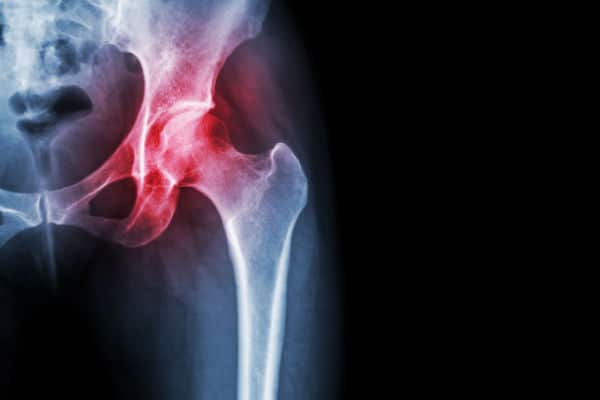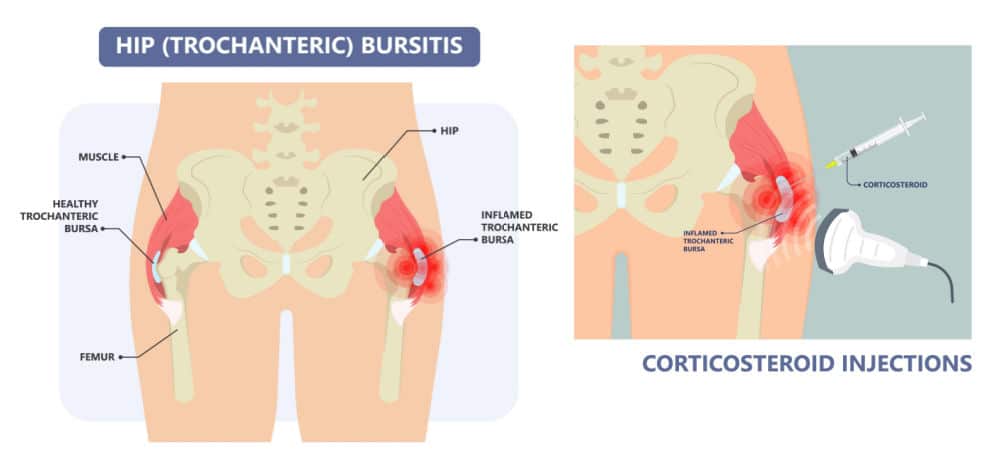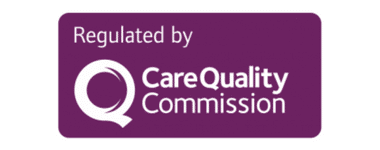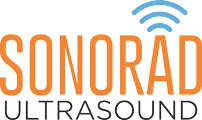Trochanteric Bursitis Treatment Slough
Sonorad offers a highly specialised ultrasound-guided injection service, providing fast access to pain relief for Trochanteric Bursitis.

Trochanteric Bursitis Treatment Clinic Slough
Sonorad offers a highly specialised, unique service which provides a one-stop solution for rapid Trochanteric Bursitis pain relief in Slough. We are dedicated to providing a cost-effective and convenient solution. A GP or medical referral is not required to provide fast access to pain-relieving injections. Our clinicians are highly experienced and have extensive experience in the NHS and private sectors. In one appointment, your clinician will perform a full assessment including a diagnostic ultrasound scan before performing an ultrasound-guided injection.

IF YOU DO NOT HAVE A REFERRAL LETTER FROM YOUR GP OR CLINICIAN, YOU MUST BOOK A CONSULTATION WITH OUR CONSULTANT RADIOLOGIST BEFORE OR WITH THE BOOKING OF AN INJECTION OR GUIDED TREATMENT.
What is Trochanteric Bursitis, and what are its common symptoms?
Trochanteric Bursitis is the swelling of a fluid sac located on the outer pointed edge commonly known as the greater trochanter of the long bone ( Femur) in the hip joint. Some repetitive activities may trigger this inflammation. Patients usually have symptoms of pain and tenderness on the outer hip joint while walking, going upstairs or sleeping on the affected side. The pain symptoms may sometimes be in the groin or buttock area. The lateral hip pain condition is also termed Greater Trochanteric pain syndrome (GTPS).

Patient Reviews
Why patients choose Sonorad
“I recently booked an Ultrasound with Dr Mahmood online to avoid the NHS waiting list. The booking process was very straightforward and I arranged a short notice appointment.
The atmosphere was professional, friendly and reassuring, making me feel comfortable. Dr Mahmood took the time to listen to my concerns and was very thorough, explaining and identifying issues and procedures.”
I would most certainly recommend this service and would use it again if required. ” – Elizabeth D
“Awesome service. Booked this place as our GP was taking forever to get back to us on a X-Ray. We were initially worried that the issue won’t be picked up by ultrasound but thankfully Dr Mahmood was able to spot the issue and took his time to explain it to us. The booking process was really easy as well. Talked to the lady on the phone who was very attentive and I was able to make the booking online pretty easily.” AJ from Slough
Exceptional & Professional Care
Our private ultrasound scan clinic has a top priority of the welfare of our visitors. Our Specialists actively practice their specialities at leading hospitals in the UK and across the NHS, ensuring you receive the highest level of care. Our team are fully registered and regulated for practice in the United Kingdom. Our patients should expect nothing less.
Comfortable & Painless Ultrasound
Performed by Consultant Radiologists
Same-Day Results For Peace of Mind
Expert Care, Professional Advice
Trochanteric Bursitis FAQs
How is Trochanteric Bursitis diagnosed?
Trochanteric Bursitis can be diagnosed using various methods, including physical examination, patient’s medical history, and often, diagnostic ultrasound scans.
What are some medical terms associated with Trochanteric Bursitis?
Medical terms related to Trochanteric Bursitis include “bursa sac,” “trochanter,” “inflammation,” “ultrasound scan,” “corticosteroids,” and “bursa injection.” ” GTPS- greater trochanteric pain syndrome”
For Ultrasound-Guided Trochanteric Bursitis Diagnosis in Slough Click Here
What is a diagnostic ultrasound scan for Trochanteric Bursitis?
A diagnostic ultrasound scan is readily available and uses high-frequency sound waves to create images of the hip area. Using ultrasound a doctor/ healthcare professional visualizes the bursa and examines the surrounding structures to confirm the diagnosis.
Ultrasound is a fantastic non-invasive tool that has revolutionised the current Physical and medical practice.
Ultrasound constructs the pictures of the muscles, tendons, ligaments, nerves and joints (small or big ) throughout the body. It helps diagnose sports injuries, sprains, strains, muscle tears, trapped nerves, arthritis and rheumatology conditions.
Ultrasound does not use X radiation and is considered the safest, non-invasive modality for musculoskeletal problems, whether sports/ work or age-related.
What is Ultrasound Imaging of the Musculoskeletal System?
Ultrasound imaging is a non-ionising and non-invasive medical test that helps physicians diagnose and treat medical conditions. It is safe and painless. It produces pictures of the inside of the body using sound waves. Ultrasound imaging is also called sonography. It uses a small probe called a transducer and gel placed directly on the skin. High-frequency sound waves travel from the probe through the gel into the body. The probe collects the sounds that bounce back. A computer uses those sound waves to create an image. Ultrasound exams do not use radiation (No x-rays). Because ultrasound captures images in real time, it can show the structure and motion of the body organs. Thanks to new additions microflow can detect minor inflammations. Ultrasound images of the musculoskeletal system provide pictures of muscles, tendons, ligaments, joints, nerves and soft tissues throughout the body.
Book Diagnostic Ultrasound-Guided Trochanteric Bursitis Treatment in Slough
Are there any other imaging tests for Trochanteric Bursitis?
In addition to ultrasound, magnetic resonance imaging (MRI) is used to diagnose. X-rays may also be used to assess the hip and rule out other possible causes of pain.
What are the treatment options for Trochanteric Bursitis?
Treatment options may include avoiding the activity which triggers the pain, rest, physiotherapy, and anti-inflammatory medications, and in resistive and severe cases, bursa injection therapy is proven to be effective. Ultrasound provides the best guidance to accurately inject the bursa while minimising damage to the other nearby structures.
What is bursa injection treatment for Trochanteric Bursitis?
Anti Inflammatory medications such as corticosteroids are predominantly used to be injected into the bursal sac to reduce swelling and provide pain relief.
Ultrasound-guided hip injection vs non-guided hip injection?
Ultrasound-guided Hip joint injections must be performed by a qualified health professional who is trained in such procedures.
Non-guided (also known as ‘blind’ injections) hip joint injections are inaccurate and frequently do not result in significant pain reduction. At Sonorad, we use state-of-the-art high-frequency ultrasound equipment for guidance to ensure proper needle placement, avoid sensitive and healthy areas, and keep pain to a minimum.
Many of the hip structures that require injection are relatively deep and surrounded by numerous delicate and sensitive anatomic structures (such as the femoral nerve, artery, and sciatic nerve). As a result, it is critical that the correct target is identified and monitored during the injection procedure. During an ultrasound-guided injection, the fragile structures that surround the hip joint can be viewed and avoided.
Our consultant radiologist initially uses local anaesthetic for pain reduction to the subsequent injection. The doctor utilise the thinnest, shortest needle possible to achieve the appropriate target while using ultrasound guidance. Using ultrasound guidance provides little pain, avoids tissue trauma, and prevents unintentional soft tissue trauma.
Schedule a Trochanteric Bursitis Treatment Consultation at our clinic in Slough
Are there any potential risks or side effects of bursa injections?
Bursa injections are generally safe, but they may carry risks, including infection, bleeding, or allergic reactions. Your consultant radiologist at Sonorad will discuss with you the benefits and side effects and obtain consent before injection. You should ask as many questions as you can.
What types of ultrasound guided injections can I have in my hip?
Steroid injections (sometimes known as cortisone injections) are the most commonly used injections for hip discomfort. They are fast-acting and provide immediate pain relief. However, we also perform Hyaluronic acid injections for hip osteoarthritis.
Choosing the best injection option is only possible after a proper diagnosis. The majority of the time, this can all be done in a single appointment.
Hyaluronic Acid ( Ostenil/Ostenil Plus) is a non-steroidal injection and is similar to the joint fluid. This lubricates the joint cavity and relieves pain. Depending upon the condition, the hyaluronic acid injections are used 3 times at two-week intervals for a long-lasting effect. Sometimes steroids and Ostenil can be combined for immediate and long-term relief.
For more information about hyaluronic acid injections please visit our web page Hyaluronic Acid Injections Slough
How many hip injections can I have?
At Sonorad, we find that a single injection is sufficient to treat the majority of patients; however, as previously discussed, if you do require additional injection therapy (for chronic conditions, for example), we recommend no more than three injections in one area over a one-year period. If three injections within a year do not control your symptoms and you have been diligent with your rehabilitation programme, it is strongly advised that you seek an orthopaedic assessment to determine whether surgery is warranted.
Book a Hip Pain Consultation at our clinic in Slough Berkshire
How quickly does an injection take effect?
It usually takes 1-3 days for the steroid to begin functioning. A steroid injection can even start functioning the same day in rare circumstances.
All injections are accompanied by a short-acting local anaesthetic, so you should feel relief shortly after the injection. This can take up to two hours, during which time you may experience discomfort. There is a slight chance that you will experience increased discomfort after an injection; this can linger for a few days and is completely normal. Please do not be concerned if this occurs. A short time of relaxation, some over-the-counter medication, and an ice pack are generally sufficient to bring things back to normal.
A hyaluronic acid injection and a platelet-rich plasma (PRP) injection can take longer to start working (up to 4-5 weeks), so some patience is required. Your clinician is always available to address your inquiries.
How long does it take to recover from Trochanteric Bursitis with treatment?
Recovery time varies, but many patients experience relief within days to few weeks of treatment. Complete recovery may take several months, depending on the severity of the condition and the chosen treatment approach. At Sonorad ultrasound we ask you to fill a pain scoring diary sheet to monitor the condition and for future treatment options.
Can I drive after ultrasound guided injection?
It’s very unlikely to have a major post-injection side effect.
However, as a precaution, you are advised not to drive back by yourself as skin local anaesthetic may take some time to wear off. Please arrange for some family member, or friend or use a taxi/ public transport to travel back. Most of the motor insurance companies also advise the same.
Are there any side effects of the intra articular injection?
There can be rare side effects.
Rarely some patients may encounter discomfort/ pin flare up which may happen within 24-48 hours and would fade away with the use of usual pain medication ( paracetamol).
Infection has also been described as a rare and almost a theoretical complication one in 2000. Fortunately, we were never been notified by any of our patients about the infection. At Sonorad we perform procedures in strict aseptic conditions to avoid the risk of infection. If post injection, you feel any symptoms of redness or temperature, we recommend you to contact your family physician for advice.
At Sonorad your doctor will discuss once again with you the benefits and any possible side effects before proceeding injection/ treatment plan. You will be given the opportunity to ask as many questions as you like. As our standard practice your consent will be obtained before any procedure.
What are the advantages of ultrasound guided injections?
It’s ideal to bring a referral from your clinician. If you do not have one, you must book a consultation appointment with The Sonorad Consultant radiologist to assess the condition to define a course of treatment planning.
Benefits of ultrasound-guided injection
Ultrasound scanning is non-invasive and painless (no needles or injections).
Ultrasound imaging is extremely safe and does not use X-radiation.
Occasionally, an ultrasound exam may be temporarily uncomfortable, but it should not be painful.
Ultrasound is widely available, easy to use, and less expensive than most other imaging methods.
Ultrasound scanning gives a clear picture of soft tissues that do not show up well on x-ray images.
Ultrasound provides real-time imaging. This makes it a good tool for guiding minimally invasive procedures such as needle biopsies, fluid aspiration, and treatment of tendon inflammations.
Patients with certain cardiac pacemakers and metallic implants or fragments in the body often cannot be safely exposed to the strong magnetic field of magnetic resonance imaging (MRI); however, patients can safely receive ultrasound imaging.
Ultrasound is also an excellent alternative to MRI for claustrophobic patients.
Compared to MRI, ultrasound may provide greater internal detail when assessing soft tissue structures such as tendons and nerves.
The unique ability to capture real-time images gives ultrasound an edge to see the dynamic movement of tendons, joints or extremities.
Ultrasound imaging is faster than MRI and does not require the patient to remain completely still, allowing infants to be imaged without sedation.
Get in touch for Advanced Ultrasound Guided Hip Injections in Slough
Can Trochanteric Bursitis recur after treatment?
Trochanteric Bursitis can recur. Maintaining proper hip mechanics, posture, and following a healthcare provider’s recommendations can help reduce the risk of recurrence.
Do you offer ultrasound guided Trochanteric Bursitis Injections near me?
We operate our clinic from Manor Park Medical Centre, 2 Lerwick Drive, Slough, Berkshire SL1 3XU. Please note we are not part of Manor Park Medical Centre but use the premises.
We have people travel to us from many miles around Berkshire including Windsor, Hayes, High Wycombe, Ascot, Marlow, Hounslow, Uxbridge, West Drayton, Maidenhead, Staines, Oxford, Richmond, Twickenham and West London.
Registered and Regulated






Here To Help
Read FAQs
Read FAQs to find out more about our ultrasound services
Message Us
Do not hesitate to reach out to us. Use our online form to message us.
Give Us a Call
If something is unclear, give us a call directly to discuss our services.
